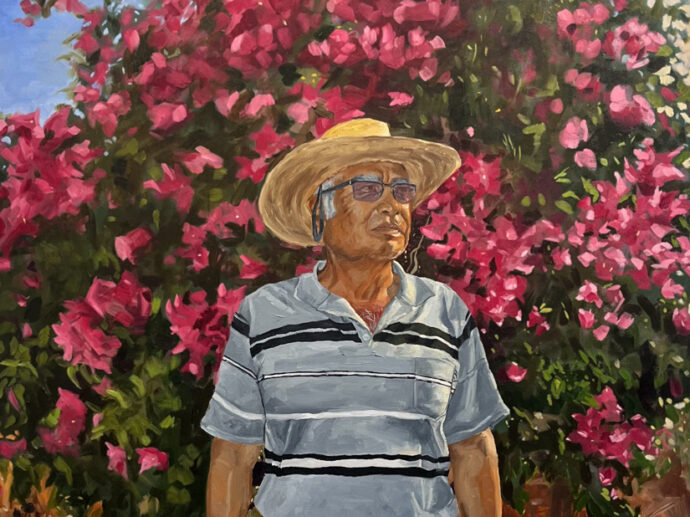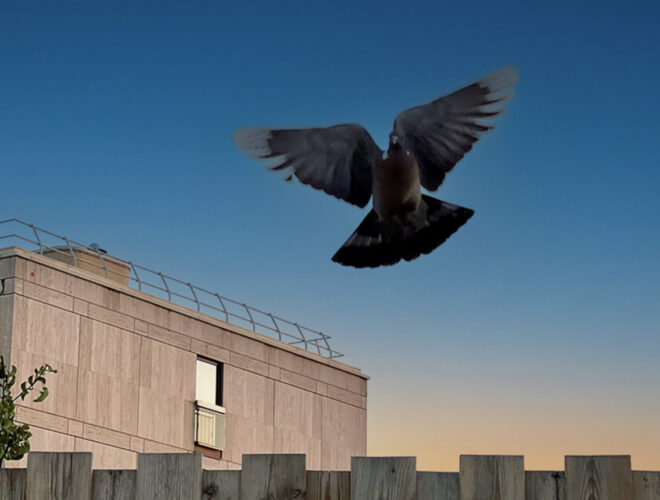
Martine Syms: Ugly Plymouths
Martine Syms’ newest exhibition, Ugly Plymouths
To anybody familiar with Martine Syms’ work, it is no surprise that she is a master in the use of combining the physical and the digital. In her previous work Project 106, her use of space forced the viewer to physically traverse the room in order to experience the exhibition in coherent order .
That particular example was inspired by the great migration of black Americans from the South to the North in the mid-1900s. This one was a little different.
Ugly Plymouths, at 24 Cork Street, London
Set in one among many galleries a stone’s throw from London’s Oxford Circus, Ugly Plymouths is the latest in a long and successful line of exhibitions put on by Martine Syms. Even before entering the gallery space, I was immediately struck by the striking red glass of the gallery wall that hid the contents of the exhibition. Once inside, lights from above cast a similar red glow down onto the viewer.
Three screens stood in a triangle. It was recommended to me that I stand in the middle of the triangle and if you get a chance to view this exhibition, I recommend the same to you. The three screens run simultaneously, each telling their own story of one of the three main characters, and standing in the middle of the triangle allows the viewer a choice: watch the two screens of the characters representing Martine’s inner-self and outer-self or watch the two screens of the characters representing Martine’s outer-self and her love interest. You can, of course, choose to focus your attention on a single screen. But you cannot view both Martine’s inner-self and her love interest. Take my word for it. I tried.
The story that unfolds in this one-act play is that of two people (essentially Martine and her love interest) as they build their relationship. It begins as many relationships do, in real life (IRL) but quickly, as many relationships do, moves onto the digital stage.
Marrying the digital and the physical
I will not tell you exactly how Martine Syms represents the relationship in its different phases, nor will I tell you how she represents the competing lives of her inner and outer self. That would give the game away. What I will tell you is Martine’s use of the physical space, as well as her representation of the digital life and the analog life, is fascinating. Not just in how the viewer sees the exhibition but how they hear it. Standing in the centre of the gallery creates a 3-dimensional platform for hearing the exhibition. It is a brilliant counter to the traditional Cartesian model of the gallery space.
Furthermore, her use of individual sounds and conversations – how they transfer between jilted and flowing – forces the viewer to look upon the digital and the analog with new light, unsure of which is more natural in the current dating game.
Upon entering the gallery and gaining an understanding as to which screen represents what, it became very clear very quickly what is going on. There is little subtlety there. However, the eight-minute long videos, individually and linked together, are where the real detail lies. You find yourself noticing new things each viewing as you try to balance being absorbed into one screen with a need to find parallels between the different characters.
One-act play doesn’t mean one-time viewing
The play is only eight minutes but it requires multiple viewings from multiple angles to fully grasp what is happening. If you are able to visit the exhibition at 24 Cork Street, I recommend immersing yourself in the story for as long as you can.
Personally, I found myself immediately drawn to the differences and similarities between Martine’s inner and outer selves. I have a partial interest in our minds’ representation of ourselves. But as I watched more, as I listened more, I began to be drawn into the conversation between Martine and her love interest, particularly in the conversation taking place and its rhythm and flow.
It was a joy to experience and while I could have stayed for an age learning new things, attempting to understand in greater ways Martine’s sense of self, I did not want to deprive other viewers of the chance to stand in the middle of the screens.
Full immersion. Full isolation?
That is, perhaps, my only complaint. The immersive nature of this particular exhibition, alongside the fact that we live in COVID times, forces the exhibition to be enjoyed on an individual basis. Its immersion, in a way, requires an element of isolation. I admit the only times I was taken out of the experience was when I turned my head and saw another human being watching with me (it did not help that I felt a tinge of rudeness in my position in the centre as it meant any other viewer was automatically blocked from viewing one screen by my presence). Only three are allowed in the gallery anyway due to COVID so it wasn’t too bad. And in a way it is impossible to produce these effects in a less immersive setting. But it is one of the downsides to this particular style of art.
If you are lucky enough to visit this exhibition, make sure you take a moment to ask the staff what is going on, which screen is which. See how they explain the setup and see what they recommend. While I thoroughly enjoyed the experience and was in marvel at Martine’s ability to force a change in perspective (something I am always appreciative of), I confess had I not talked with the gallery staff I would not have understood – and therefore not have appreciated – the extent of what was going on in front of me.
Ugly Plymouths: Well worth a visit
But that is the case with any art form and as far as criticism goes it is hardly severe. But this is a review and I wish to be honest in my analysis. Again I implore you to steal a visit to this exhibition if you can. Go at a quiet time and allow yourself to be fully immersed in the experience.
It will be worth it, I assure you.
*




